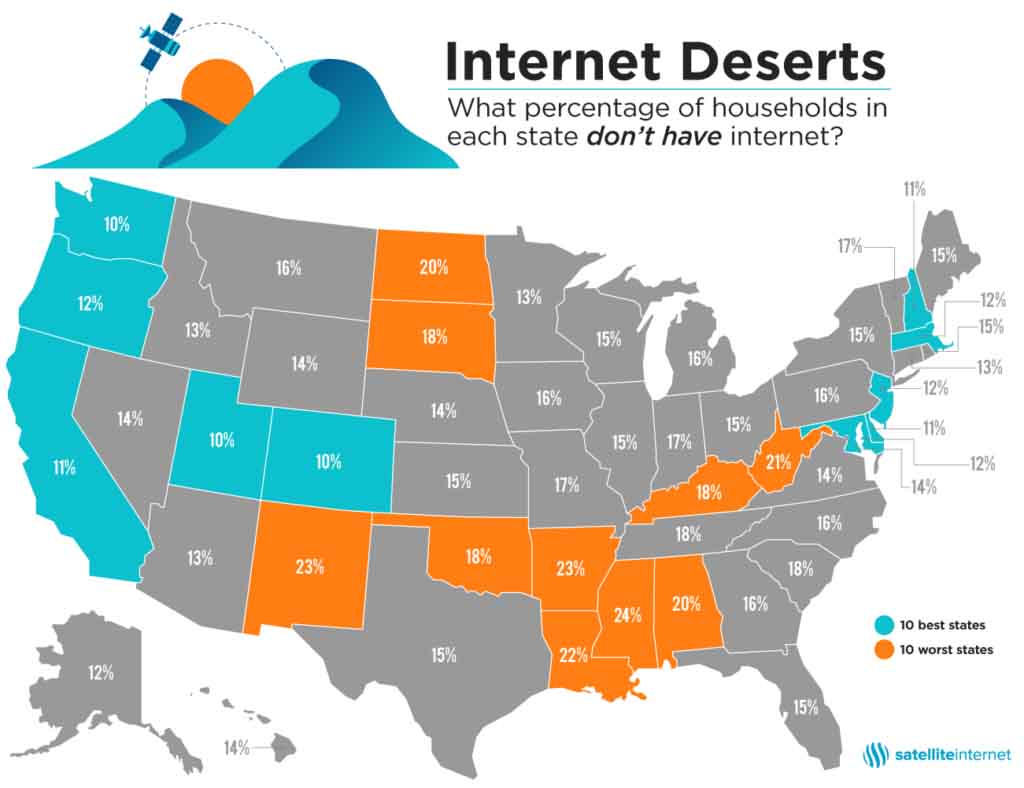The COVID-19 pandemic has made the digital divide in the United States especially stark. As Americans stay home and join people all over the world by practicing social distancing, many are doing so without high-speed internet access that allows them to work, study, and recreate on equal footing.
According to the World Economic Forum, 6% of Americans do not have access to a high-speed internet connection. In 2019, the FCC estimated 21.3 million Americans don’t have access to internet service at broadband speeds, though research by Microsoft has indicated that number to be as high as 157.3 million.
But some parts of the country are much better off than others. Think your state is tech savvy? Wondering where working and studying from home is easy, thanks to a good internet connection? We analyzed thousands of data points to find out which states are the most and least connected to the internet in 2020.
Read on to find out how your state stacks up.
